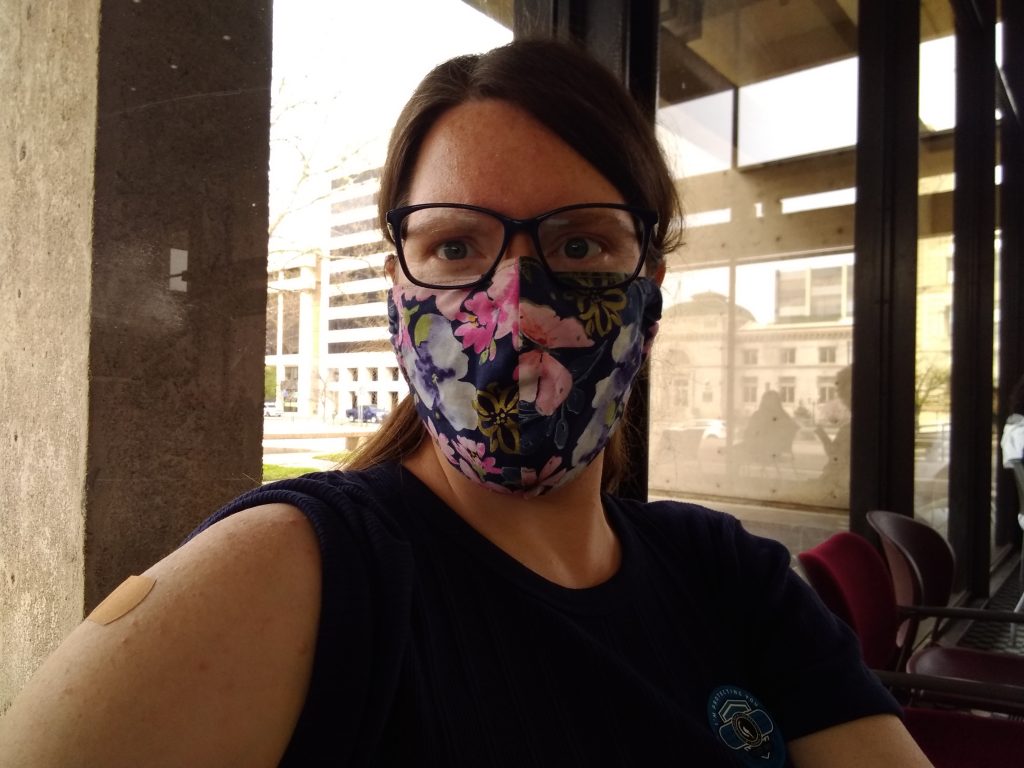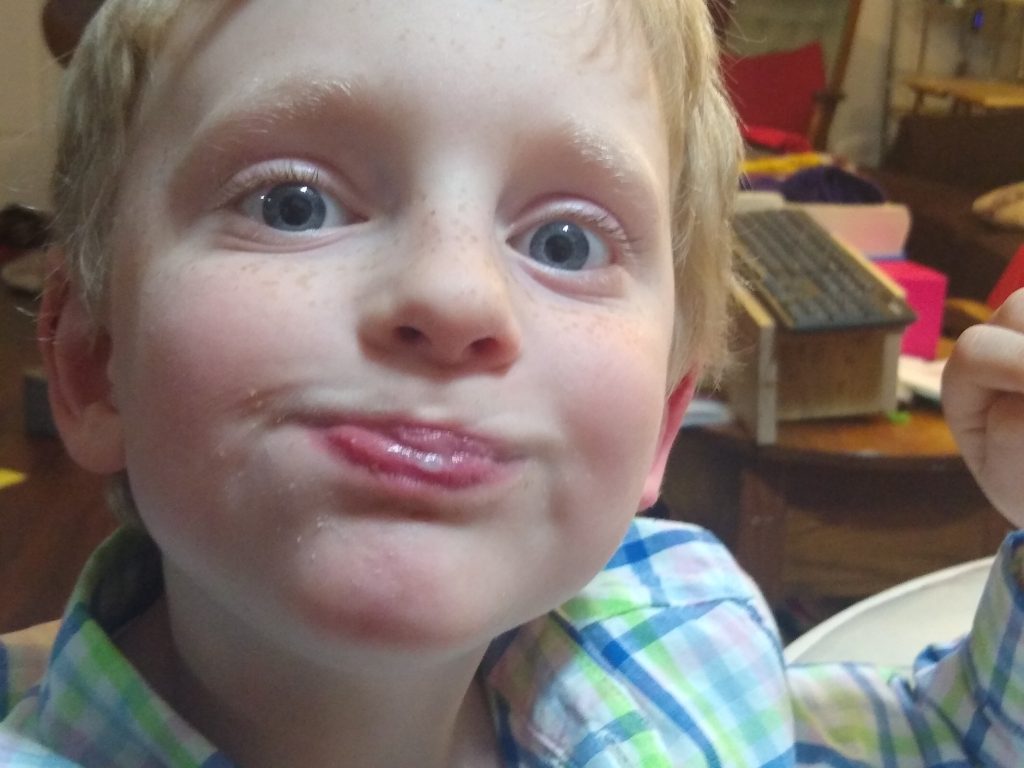As our first year of “official” school, 2020-2021 was an interesting one.
We started slow, working our way up to the “main event” (which turned out to be a great start to the school year) … but then we tapered back as the year continued. We got pregnant at the beginning of the calendar year and first trimester exhaustion is a real thing :-) “Reading time” and Tirzah Mae’s core subjects remained consistent, but singing time, calendar time, and activity times were sporadic at best.
Nevertheless, I’m considering 2020-2021 to be a successful first year of “official” homeschooling. For the year, we all completed:
Literature – Poetry
- Nursery rhymes and songs from What Your Kindergartener Needs to Know
- Nursery rhymes and songs from What Your Preschooler Needs to Know
- The 20th Century Children’s Poetry Treasury edited by Jack Prelutsky
- Nursery Rhyme Classics illustrated by Kate Greenaway
- The Usborne Children’s Songbook illustrated by Stephen Cartwright
- A Zooful of Animals selected by William Cole
- Seasons by Charlotte Zolotow
- Yummy: Eating Through a Day edited by Lee Bennett Hopkins
Literature – Stories and Folk Tales
- Stories from What Your Kindergartener Needs to Know
- Stories from What Your Preschooler Needs to Know
- Aesop’s Fables illustrated by Jerry Pinkney
- The Blue Fairy Book edited by Andrew Lang (continuing into the 2021-2022 school year)
Literature – Chapter Book Read-Alouds
- Mr. Popper’s Penguins by Florence and Richard Atwater
- The Boxcar Children by Gertrude Chandler Warner
- Mrs. Piggle-Wiggle by Betsy MacDonald
- Betsy-Tacy by Maud Hart Lovelace
- The Toys Go Out by Emily Jenkins
- Charlotte’s Web by E.B. White
- The Wonderful Wizard of Oz by L. Frank Baum
- My Father’s Dragon by Ruth Stiles Gannett
- Matilda by Roald Dahl
- A Cricket in Times Square by George Seldon
- The Chocolate Touch by Patrick Skene Calling
- Plus a number of audiobooks (that everyone listened to) and individual read-alouds (that I did with each child) that I didn’t record as official “school”
Social Studies
- Social studies selections from What Your Kindergartener Needs to Know
- Social studies selections from What Your Preschooler Needs to Know
- Tapestry of Grace, Year 1, Unit 1 (After one quarter, I decided I’d rather us get a broad narrative overview of history with just Story of the World without adding in supplemental readings – we’ll do Tapestry of Grace as our second go-through once more of the children are school age)
- Story of the World, volume 1: Ancient Times (continuing into 2021-2022 school year)
Science
- Science selections from What Your Kindergartener Needs to Know
- Science selections from What Your Preschooler Needs to Know
- Exploring the World of Plants by Penny Raife Durant
- From Seed to Plant by Gail Gibbons
- Seed to Plant by Kristin Baird Rattini
- Seed, Soil, Sun: Earth’s Recipe for Food by Cris Peterson
- Took a seed hunting hike – collected seeds from our yard on sticky wristbands
- Did celery experiments in plain water, sugar water, and dyed water
- Sprouted beans to see if cotelydon changes size
- Sprouted 4 different kinds of seeds to explore which sprouted first
- Sprouted avocado seeds and inspected regularly with magnifying glass
- Planted and grew radishes, lettuce, spinach, and beets from seed to harvest
- Observed and drew spring plants in the yard
- Watched about a bazillion documentaries about dinosaurs (unplanned “interruption” to my planned science programming)
Miscellaneous
- Halfway through the year, I switched to having each child have a “cooking day” with mama, where they helped with meal preparation. All have shown progress with measuring skills, knife skills, stove safety skills, and mixing and spreading. They are improving in ability to crack eggs without making a huge mess.
- All three of the “big kids” have made great strides in representational drawing and scissor skills. While we haven’t done a lot of formal projects, we continue to do the occasional process art and explore color mixing whenever we have opportunity.
- The children spent lots of time outside (and inside) running, climbing, swinging on swings, dancing, and building things.
- Tirzah Mae’s hand-stitching is becoming increasingly small and even. She is able to hand sew a straight seam.
Tirzah Mae Kindergarten
For Tirzah Mae’s kindergarten language arts, she did about half of the American Language Series K phonics and reading program (consonants, short vowel words, inital and final consonant blends, and consonant di/trigraphs.) She used homemade worksheets to learn proper letter formation for all the lowercase and uppercase letters.
For math, we continued on with Shiller Math Kit 1 until I accidentally borrowed a kindergarten math workbook from the library (thinking it was a “train the teacher” type book). Tirzah Mae immediately fell in love with the workbook and begged to do it instead of her regular math. (Sigh!) So she completed a kindergarten math workbook from Creative Teaching Press to round out her kindergarten math experience.
Overall, it was a good year. Morning time has definitely been a wonderful part of our routine – the regular inclusion of nursery rhymes and folk stories helps me be confident that the preschoolers are getting what they need in the language arts department even if I’m not doing specific “preschool” work with them.
Kindergarten work with Tirzah Mae was more challenging than I expected – despite being highly motivated to write (the stories have already filled literally dozens of notebooks), Tirzah Mae would much rather be moving than sitting still – and having to “do school” with mama while the younger children were playing rankled. I also see now that I tried too hard in the past year to get through a lesson a day instead of emphasizing focused, diligent work for a shorter period of time. As a result, both Tirzah Mae and I were prone to boom and bust cycles where we’d do a lesson a day for several days and then wear out and not do anything for several days only to start again with a fresh burst of motivation later (I know, not a great way to do skill work!) Nevertheless, looking over the skills Tirzah Mae has attained in the past year, I am confident that she is right in line with where she should be at the end of kindergarten.


